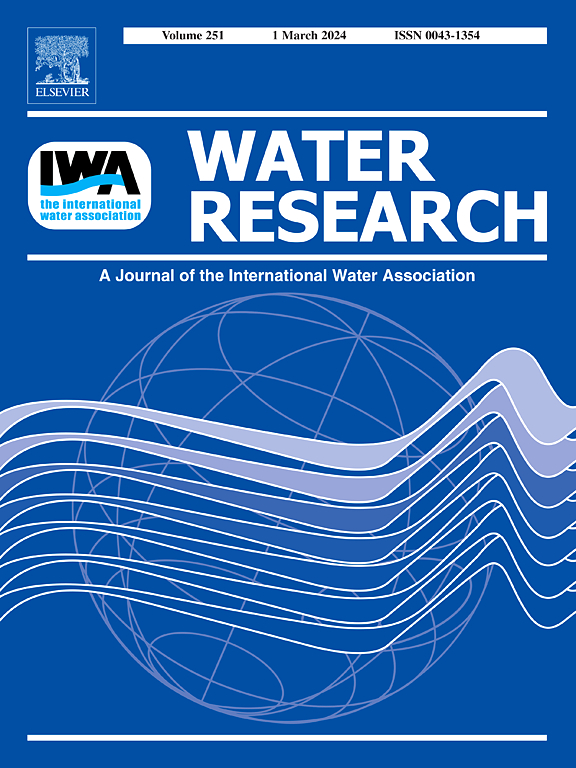One material, two functions: A dual-mechanistic approach for the removal of persistent and mobile organic micropollutants from drinking water
IF 11.4
1区 环境科学与生态学
Q1 ENGINEERING, ENVIRONMENTAL
引用次数: 0
Abstract
Organic micropollutants (OMP), especially those that are more persistent and mobile due to their physico-chemical properties, are resistant to common water treatment techniques and might reach drinking water. Considering the wide range and different physico-chemical properties of persistent and mobile (PM) substances, the strategic integration of synergistic processes appears as a promising solution for the removal of persistent and mobile substances. In this study, the development of a dual-functional material is explored for synergistic adsorption and catalysis, presenting a dual-mechanistic approach for removing potentially persistent and mobile substances from drinking water. The material was fabricated using waste materials (coffee and aluminum wastes) and tested for removing 23 selected OMP. The results demonstrate that the dual-functional material can both adsorb some target OMP and activate persulfate to oxidize OMP by generating reactive oxygen species (ROS). Recycling of the material in repeated cycles revealed removal of several OMP even in 5th cycle, using 0.5 g/L of the synthesized material, 0.5 mM persulfate and 1 h contact time. Quenching experiments indicated that singlet oxygen (1O2) is the dominant ROS in the proposed system, implying that it is a non-radical advanced oxidation process.

求助全文
约1分钟内获得全文
求助全文
来源期刊

Water Research
环境科学-工程:环境
CiteScore
20.80
自引率
9.40%
发文量
1307
审稿时长
38 days
期刊介绍:
Water Research, along with its open access companion journal Water Research X, serves as a platform for publishing original research papers covering various aspects of the science and technology related to the anthropogenic water cycle, water quality, and its management worldwide. The audience targeted by the journal comprises biologists, chemical engineers, chemists, civil engineers, environmental engineers, limnologists, and microbiologists. The scope of the journal include:
•Treatment processes for water and wastewaters (municipal, agricultural, industrial, and on-site treatment), including resource recovery and residuals management;
•Urban hydrology including sewer systems, stormwater management, and green infrastructure;
•Drinking water treatment and distribution;
•Potable and non-potable water reuse;
•Sanitation, public health, and risk assessment;
•Anaerobic digestion, solid and hazardous waste management, including source characterization and the effects and control of leachates and gaseous emissions;
•Contaminants (chemical, microbial, anthropogenic particles such as nanoparticles or microplastics) and related water quality sensing, monitoring, fate, and assessment;
•Anthropogenic impacts on inland, tidal, coastal and urban waters, focusing on surface and ground waters, and point and non-point sources of pollution;
•Environmental restoration, linked to surface water, groundwater and groundwater remediation;
•Analysis of the interfaces between sediments and water, and between water and atmosphere, focusing specifically on anthropogenic impacts;
•Mathematical modelling, systems analysis, machine learning, and beneficial use of big data related to the anthropogenic water cycle;
•Socio-economic, policy, and regulations studies.
 求助内容:
求助内容: 应助结果提醒方式:
应助结果提醒方式:


